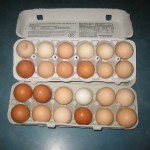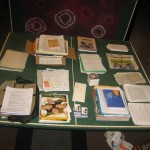 Today Jim and I leave for Afghanistan. (And you thought we were crazy to undertake a simple and safe Food Stamp Challenge!) We will be visiting our daughter who is a foreign correspondent for the AP in Kabul. She assures us that we will not be in any danger – and this from a young woman who goes on embeds with the military. I think what we consider danger is all relative. At right is a photo she took last year of some local wildlife – soon to become food.
Today Jim and I leave for Afghanistan. (And you thought we were crazy to undertake a simple and safe Food Stamp Challenge!) We will be visiting our daughter who is a foreign correspondent for the AP in Kabul. She assures us that we will not be in any danger – and this from a young woman who goes on embeds with the military. I think what we consider danger is all relative. At right is a photo she took last year of some local wildlife – soon to become food.
Anyway, the way that this relates to the Food Stamp Challenge is that we really won’t have any control over what we eat and how much it costs. We’ll eat whatever people give us and pay for eating out when necessary. I don’t think we’ll have the luxury of grocery shopping and besides, it was hard enough calculating meal prices in US dollars, who knows how much it will be in Afghan currency.
I don’t know if I will have internet access to update this blog while traveling so just keep checking. If anyone wants to check our home, however, you should find it well cared for by one of our sons who will be there in our absence. This is the son who says, “Hey, I can easily eat on $4.50/day. No problem.” We’ll see how he does with a nearly bare refrigerator.





















